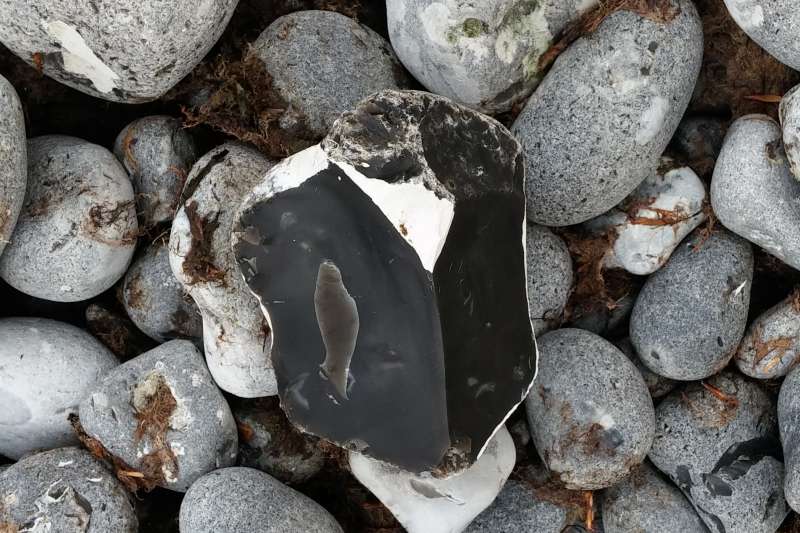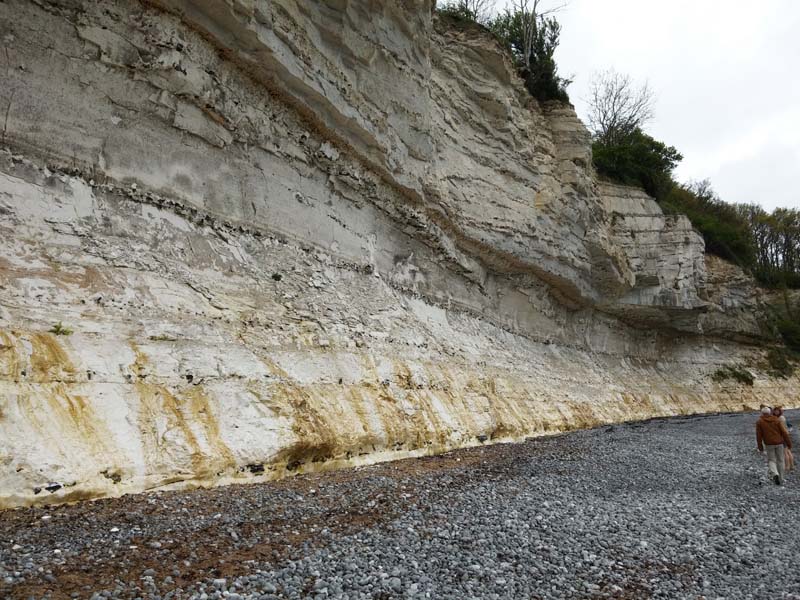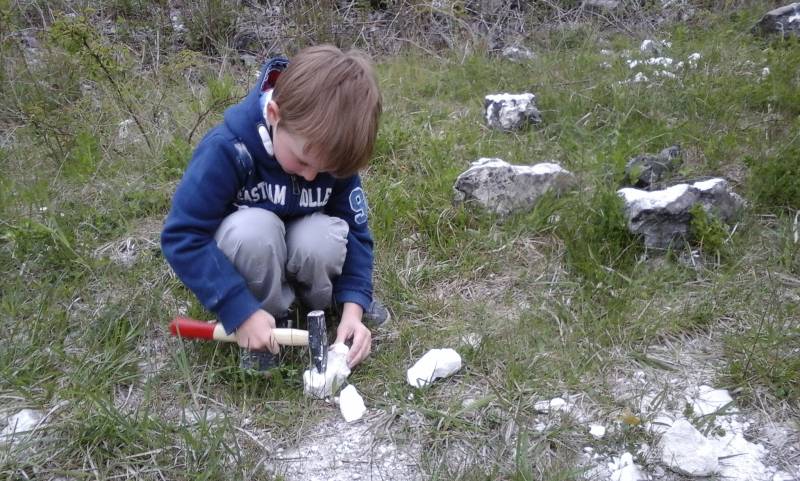About a month ago I was invited to Denmark to speak about geology and rocks of Stevns Klint to young students of Copenhagen Estonian School (Københavns Estiske Søndagsskole). The school had a field trip with bicycles to interesting locations, including the coastal cliff which is world-famous among geologists. Why famous? It is one of the best K/T boundaries and it was the site where the radical theory of meteorite-driven end-Cretaceous extinction event was developed.
The cliff is composed of chalk and bryozoan limestone (lower and upper part of the klint, respectively) and a hard to notice narrow band of clayey material between them which happens to be abnormally rich in iridium. This is a metal that is rare on Earth but abundant in iron meteorites. The meteorite itself hit the Earth in Mexico but the consequences were truly global as demonstrated by this UNESCO World Heritage Site in Denmark.
The rock face also contains lots of chert (flint) nodules which are very common in Cretaceous chalks. The entire rocky coastline is composed of them because they are very resistant to abrasion, especially when compared to much softer limestones. But hardness does not mean that they are hard to break into pieces. Actually, it is quite easy and the result is lots of knife-sharp edges which were exploited by our stone age ancestors. Playing with these rocks was much more fun to most of the children than paying attention to stories about dinosaurs and iridium-rich clay.

All of the boulders here are made of chert but you have to break one into pieces to see the smooth and curving fresh surface with sharp edges. White material is chalk.

Stevns Klint in Denmark. If one would make a list of places every geologist should try to visit, Stevns Klint would surely be a strong candidate to be included.

I had my children with me as well. Here is my son looking for fossils in chalk in an abandoned chalk quarry. This chalk is very rich in fossils (brachiopods, sea urchins, bryozoans, corals, etc.) which made everyone busy and happy 🙂